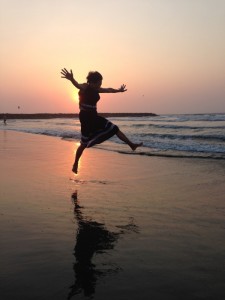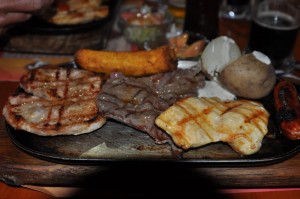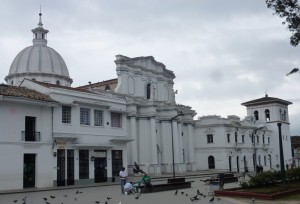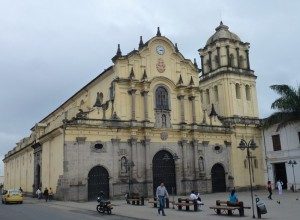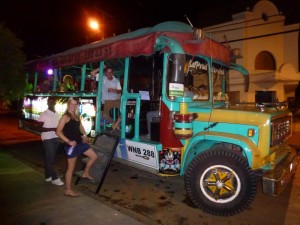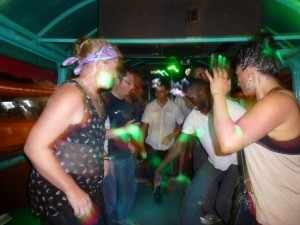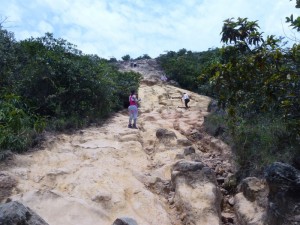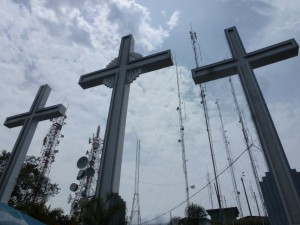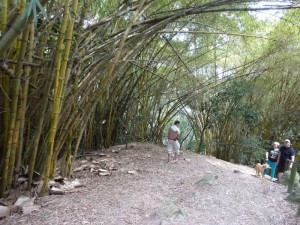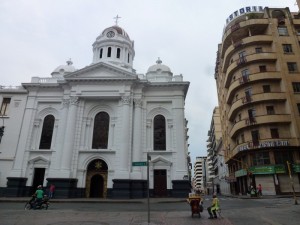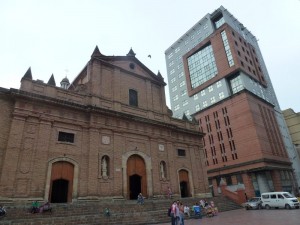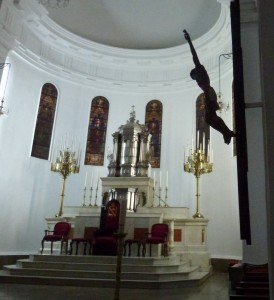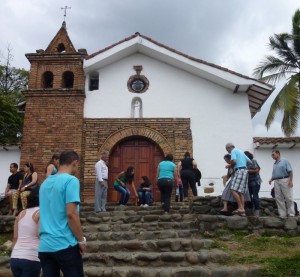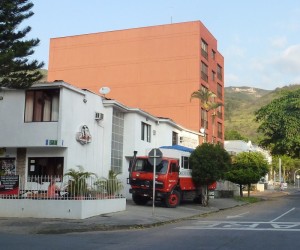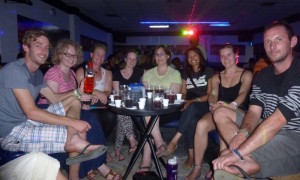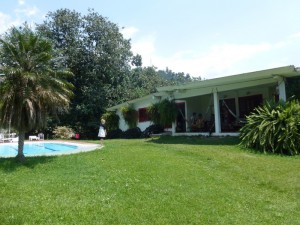Colombia, the only country with coastlines on both the Pacific Ocean and the Caribbean Sea has been described as a dangerous tourist destination owing to the drug trade and fights amongst the drug cartels, guerrillas and political instability. My 18-day overland journey in Colombia taking from Ipiales to Cartegena gives me a chance to have a feel about this mysterious country.Brief history
Colombia is separated by Andean cordilleras into the western coastal lowlands, mountainous Andean highland and eastern jungles. Indigenous cultures flourished in the valleys long before the arrival of the Spanish in the 15th century. In 1510 the Spanish founded Darien, the first settlement European settlement on the American mainland. In 1538, the colony of New Granada was established. Independence was attained under Simón Bolívar’s Venezuelan troops in 1824 and modern day Colombia became part of the Republic of Greater Colombia comprising Venezuela, Peru, Colombia and Panama. This entity only lasted till 1830.
![colombia-South-America[1]](http://www.sarahontheroad.hk/wp-content/uploads/2014/04/colombia-South-America1-300x266.gif) Colombia has a turbulent history suffering from political instability with frequent changes of government and rewriting of the constitution since 1830. After several changes in name, it was renamed in 1886 the Republic of Colombia. A civil war resulting from conflicts between the Conservatives and Liberal political parties broke out in 1899 and lasted till 1902. Panama broke off from Colombia and declared independence in 1903.
Colombia has a turbulent history suffering from political instability with frequent changes of government and rewriting of the constitution since 1830. After several changes in name, it was renamed in 1886 the Republic of Colombia. A civil war resulting from conflicts between the Conservatives and Liberal political parties broke out in 1899 and lasted till 1902. Panama broke off from Colombia and declared independence in 1903.
The country entered another period of violence called La Violencia from 1948 to 1957 costing over 300,000 lives. Marxist guerrilla groups formed in the 1960s and 1970s including the Revolutionary Armed Forces of Colombia (FARC) plunged the country into violence and instability. In the 1970s and 1980s, the country was virtually controlled by drug cartels notably the ones from Cali and Medellin led by Pablo Escobar who was murdered in 1993. Colombia was the main provider of cocaine.
In 1999 Plan Colombia aiming at tackling the country’s drug problem was launched with backing from the US. Things began to improve under President Álvaro Uribe Vélez (2002 to 2010) who had run on a platform of law and order. His successor Juan Manuel Santos has carried on reform programmes bringing steady progress and developments.
Colombia today
Colombia made up of 42 departments has become more stable since the turn of the century. Rich in mineral resources including oil, Colombia with an area of 1,141,748 km² and a population of over 46 million has emerged as a middle power with the third largest economy in South America. Its GDP nominal and PPP is estimated to be $338.8 billion and 553.5 billion respectively with a per capita income of $8,150 (nominal) and $11,600 (PPP). The country is ethnically diverse. Mestizo, White, African Colombian and Amerindian comprise 49%, 37%, 10.6% and 3.4% of the population respectively. Spanish is the official language and over 70% of the population is Catholics.
Ecologically, Colombia is one of the world’s 17 megadiverse countries. It has seven World Heritage Sites namely the Port, Fortress and other monuments in Cartagena, Los Katios National Park, San Agustin Archaeological Park, National Archaeological Park of Tierradentro, Historic centre of Santa Cruz de Mompox, Malpelo Fauna and Flora Sanctuary and Coffee Cultural Landscape. It is becoming a hot tourist destination with over 3 million foreign visitors a year.
March 27 Thursday: Otavalo, Ecuador – Ipiales, Colombia (180km; 4hrs)
We arrived at the Colombian border around 3pm. The immigration staff were very helpful. As there was a long queue, some of us were taken to a mobile office nearby. Two young officers handled our cases and we all had a free visa for 90 days. Gus hit the road again at 3:30pm.
Our next stop was the Santuario de las Lajas, the site of many miracles and apparition over the years. We spent an hour looking at this spectacular sanctuary built in Gothic style straddling a dramatic gorge. There is a small museum but there is no English explanations, I do know what miracles have taken place.
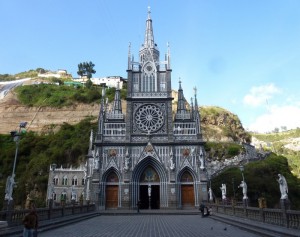 |
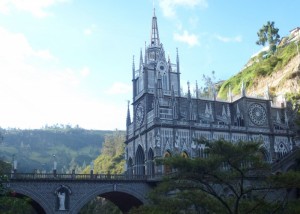 |
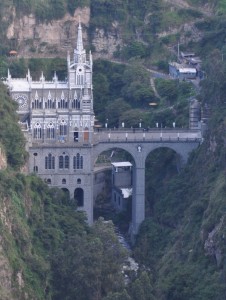 |
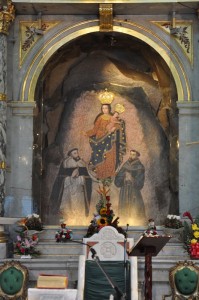 |
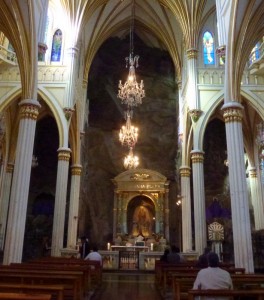 |
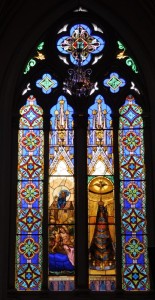 |
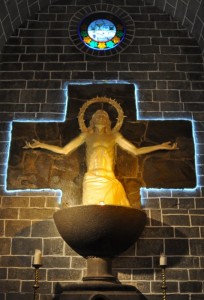 |
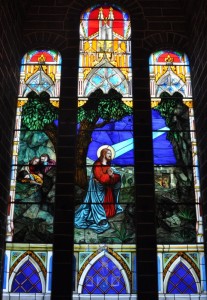 |
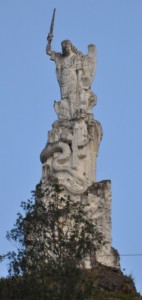 |
We set off for Ipiales at 5:30pm. By 6:15pm, we checked in a basic hotel in this border town. I shared a room with Denise and had an early dinner with my Irish and Dutch friends. We first went into a grill restaurant. Our experience in Ecuador had misled us to think that the price was in US dollar and a steak would cost US$23 plus 25% tax and service charge. We were horrified and went to an Italian restaurant next door. All of a sudden, we realised that the price was in peso (UD$1=COP$2000) and decided to return to the first restaurant. Amy and Lachi also found their way to there and seven of us had a fantastic dinner together.
I had a dark local beer and a mixed grill. I had over 400 gram of meat and my friends were surprised by my enormous appetite! The dinner only cost me US$15. Great value!
March 28 Friday: Ipiales – Popayan (320km; 9 hrs)
It was a long driving day. We set off at 8am, had a quick lunch at 1:15pm and were back on Gus at 2pm. We did not arrive at Hostel Trail till 6pm. Today’s landscape is most impressive with high and rugged mountains, deep gorges and river valleys. The scenery with patchwork-like fields of maize, eucalyptus trees and other native plants in different shades of green is breath-taking.
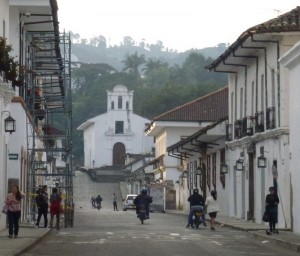 Popayan is nicknamed ‘the White City’ as all the houses in the old part of this colonial town are painted in white. Though it is the capital of the Cauca region and the former capital of Southern Colombia, Popayan has a relaxed small town feel. Most of the buildings in the town centre are occupied by banks, churches, the University of Cauca, hotels and the local government.
Popayan is nicknamed ‘the White City’ as all the houses in the old part of this colonial town are painted in white. Though it is the capital of the Cauca region and the former capital of Southern Colombia, Popayan has a relaxed small town feel. Most of the buildings in the town centre are occupied by banks, churches, the University of Cauca, hotels and the local government.
I joined the group for dinner at a nice Italian restaurant and shared a pizza with David. I paid COP$16000 for half a pizza and a beer. While others went to local clubs for music and drink, I returned to the hostel to work on my website. They had a good time: Marina who was in my room did not come back till 3am.
March 29 Saturday: Popayan – Cali (170km; 9hrs)
I got up early and was already strolling in the old town of Popayan at 6:30am. I visited the Catedral, Iglesia de Santo Domingo and University of Cauca before returning to the hostel for breakfast at 8am. Iglesia de San Francisco was closed by the time I reached its door. I had a healthy breakfast with fresh fruits and yogurt.
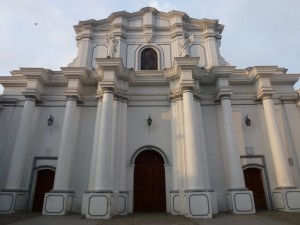 |
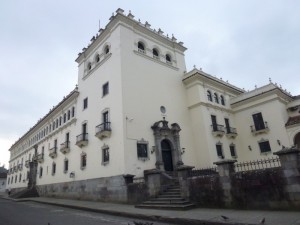 |
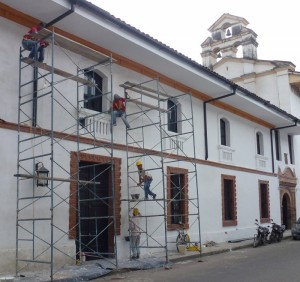 |
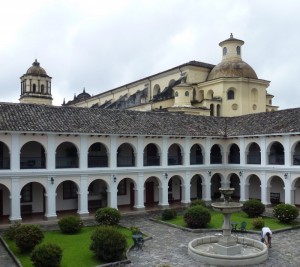 |
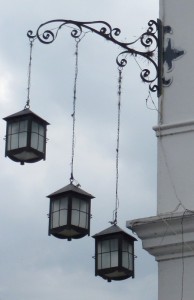 |
As we would not be leaving till 11am, I planned to visit the Museo Guillermo León Valencia. Unfortunately, it was closed. What a pity! I love to try local and street food. When I saw a lady with a broad smile selling blood sausages, I brought one for COP$1000. I enjoy the sausage stuffed with rice which is similar to what I have tried in Hong Kong.
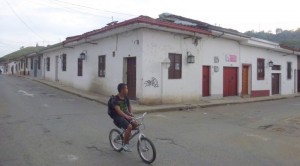 |
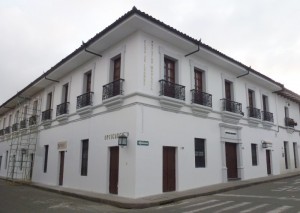 |
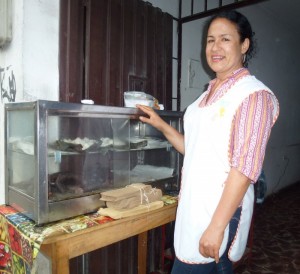 |
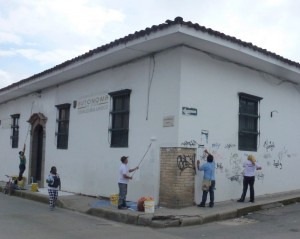 |
The highways in Ecuador and Colombia are generally good and well-paved. By 3pm, we were already in Cali (969m), the third largest city with a population of over 2.5 million. I shared a dormitory with six ladies in Casa Blanca Hostel.
Cali is rich in Afro-Colombian heritage and famous its salsa clubs. Andy had arranged a tour on a chiva bus at 9pm and we had free time till then. Before exploring the neighbourhood, I went shopping with Gordon, Freddie and Amy (Cook Team No 4) as we had to prepare the first dinner on April 1. We had COP$90000 and had to cook for 18 persons. Amy suggested we prepare lettuce wraps with minced pork.
Most of the shops were closed as it was Saturday. I decided to cook for myself as I wanted a light meal and plenty of vegetables. I brought two chicken thighs, some onions and spinach and made a nice soup!
Cali is a party town with lots of bars and restaurants. We had to bring our own drink. I brought coke and chips while others had vodka and rum. We paid US$7 each for the chivas sight-seeing bus ride. Salsa music was played throughout the ride and a few local guys from the hostel were on the bus teaching us to dance. I found the music too loud and preferred watching the street scenes and others dancing. The locals greeted our bus enthusiastically whenever we went. By the end of 2-hour ride, I had some ideas about the city which seems vibrant and prosperous.
My friends went to a club for more drinks and dancing while I was back in the hostel at 11pm. But I spent the next two hours on my photos. My mates had a good time and some did not sleep till 6am!
March 30 Sunday: Cali
I was tired and did not get up till 9:30am. After looking at the guidebook, I decided to talk a walk to Cerro de las Tres Crucse. On the way out, I saw Vladimir whom I met on the chivas bus the night before. Apparently, he is a fixer and friend of the hostel owner. He warned me that part of the walk would be steep and I should wear good hiking boots and carry enough water. He offered to walk me to the starting point.
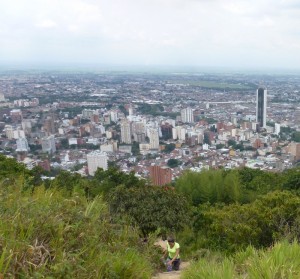 |
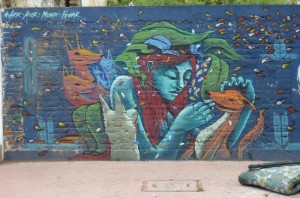 Vladimir knows the area well as he has lived in this neighbourhood which has many designer shops. He told me about each shop and his friends. Then he decided to walk with me to the top. We started the climb around 11:30am. Vladimir walked with ease while I was struggling and had to climb and crawl with my four limbs. It was getting hot and I had to stop once as I felt my heart was beating too fast: I did not want to die of heart attack! I finally reached the top at 12:45pm and had fantastic views.
Vladimir knows the area well as he has lived in this neighbourhood which has many designer shops. He told me about each shop and his friends. Then he decided to walk with me to the top. We started the climb around 11:30am. Vladimir walked with ease while I was struggling and had to climb and crawl with my four limbs. It was getting hot and I had to stop once as I felt my heart was beating too fast: I did not want to die of heart attack! I finally reached the top at 12:45pm and had fantastic views.
There was a salsa class in the afternoon. I thought we would leave the hostel at 2:30pm. I made a mistake: the group left at 2pm. I missed them by 10 minutes. So I invited Vladimir who has been very helpful to lunch at the hostel. He turned my blend chicken soup into a delightful lunch: onion soup as starter and a small portion of chicken cooked with herbs and red wine. He also prepared a dessert using raspberries and biscuits I had brought the day before. I had a wonderful morning and have learnt something the Latino’s way of life!
At 4pm, I walked from the hostel at Calle 27 all the way to San Antonio, the oldest and historic part of Cali. I walked along the Cali River, passed the administrative centre, Plaza de Caycedo, Catedral San Pedro and Iglesia de San Francisco.
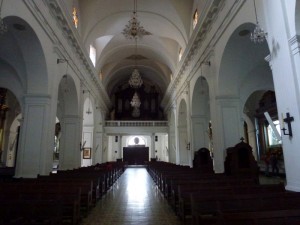 |
|
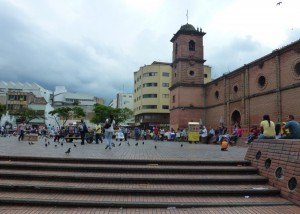 |
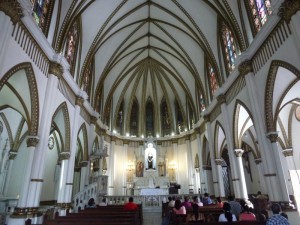 |
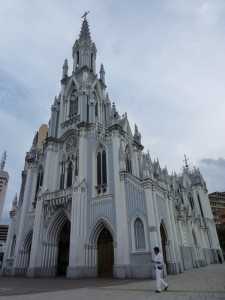 |
I walked up the Colina de San Antonio where Iglesia de San Antonio (1747) is located. I had panoramic views of the city. There was street performance and the park was full of locals who were enjoying themselves. The church opened its door at 5:30pm. I took a quick glimpse as I had to return to the hostel by 6pm to join the group to watch a salsa dance competition. I asked a sister how to get a taxi. She was very kind and called a taxi for me. I paid COP$7000 for the taxi and arrived at the hostel well before 6pm.
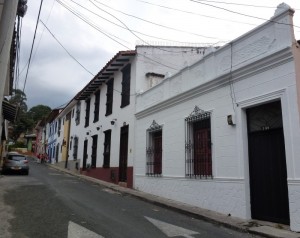 |
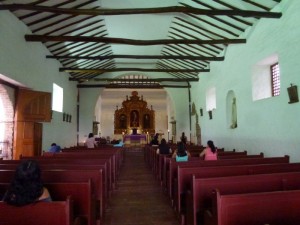 |
I joined my friends to watch a salsa competition. Vladimir suddenly appeared when Andy, Ricky and I were getting into a taxi. He asked whether he could join. We paid COP$5000 each as entrance fee. We all had a thorough body search and were not allowed to take any drink or weapon to the premises.
The night was not enjoyable for me: the music was too loud and I had to wait for over an hour for the competition to begin. I had not been to a disco for ages and it was strange to find myself at a disco in Cali. I sat watching the locals dancing but had to cover my ears with my hands at times. Vladimir did not like the setting which he considers poor taste and left before the competition began at 8pm.
I enjoyed watching the performance of the first five groups. Each group had five pairs of dancers. The costume of the girls is sexy and eye-catching while the music was lively. They danced so quickly that I could not hardly follow. It was amazing to see girls thrown in the air or slipping through the boy’s legs.
As I could no longer stand the noise, I left after the first round of competition. All in all, it’s an experience!
March 31 Monday: Cali – Manizales (170km; 5hrs)
Manizales is at the heart of Colombia’s coffee region. Gus had an easy day as it had only gentle slopes to climb. We left Cali at 8am and arrived at Hacienda Venecia around 1pm. This 480-acre plantation is beautiful and has a swimming pool. I do not mind camping if I have no better option. But I prefer a room whenever possible. So I got an upgrade sharing a room with Naomi and Nam and paid COP$57000 per for three nights including a cooked breakfast.
After lunch, I had a leisure afternoon drinking beer and reading a book. It was a hot day and jumped into the pool where I watched sunset. I felt I was on holiday in a 5-star resort! The hacienda prepared a BBQ dinner for us. The meat was delicious and I had too much once again. Luckily Andy arranged us to go to a local bar for traditional live Colombian music which is different from the salsa music in Cali. Some local guys taught us to dance. I had a dance with David and a local man. I cannot dance. But I found dancing a good work-out after a sumptuous meal.


